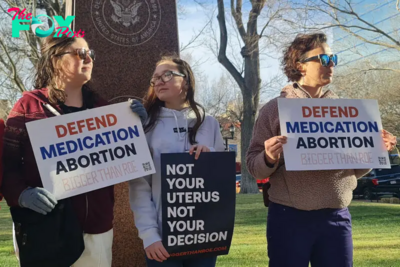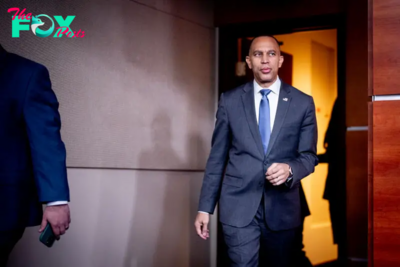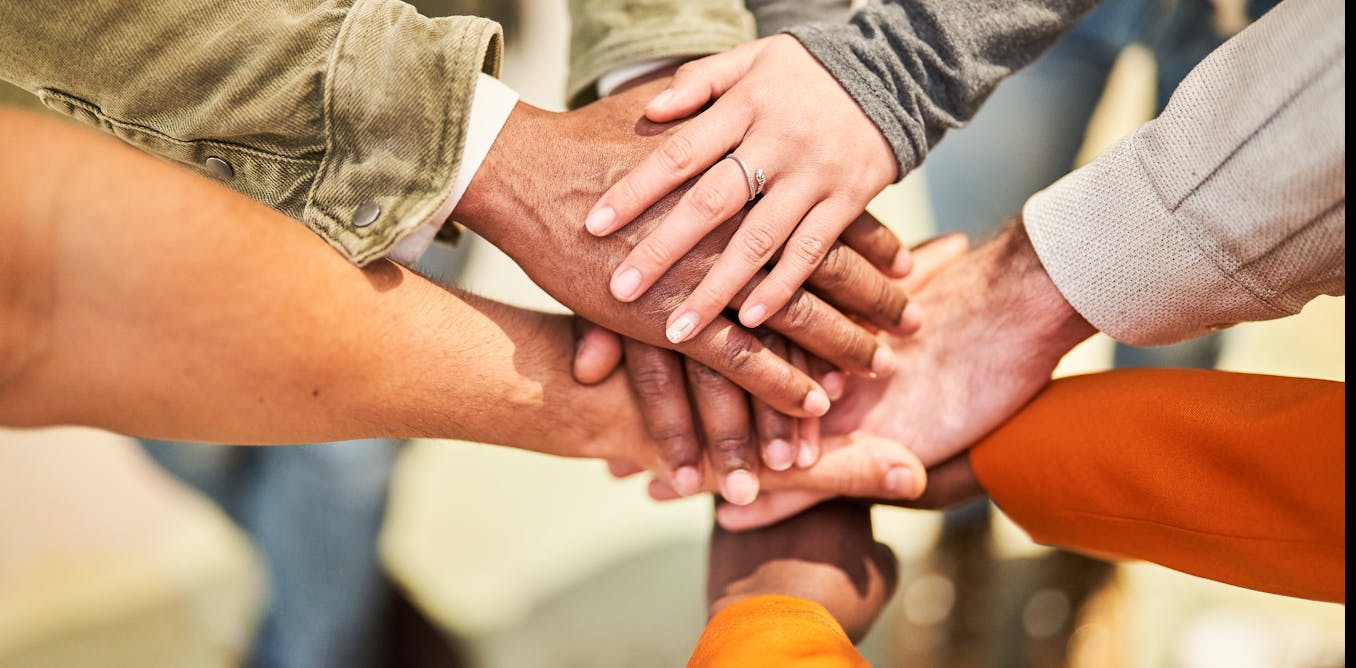Politics
7 years after genocide, plight of Rohingya refugees in Bangladesh is exacerbated by camp violence
Hundreds of thousands of Rohingya in Bangladesh marked the seven-year anniversary of displacement from their homes in neighboring Myanmar on Aug. 25, 2024. It was a somber occasion for the long-persecuted Myanmarese Muslim minority, who have faced dire living conditions while clustered into the world’s most crowded refugee camps.
Since 2017, their status has been continually challenged by both intermittent hostility from within Bangladesh and an ongoing civil war in Myanmar, during which the military government has continued to crack down on the Rohingya’s homeland in Rakhine state.
But recent events in Bangladesh may offer a glimmer of hope for the Rohingya. Months of political unrest led to the ouster of the authoritarian prime minister, Sheikh Hasina, whose government failed to find a solution to the refugee problem.
The new interim government leader, Nobel laureate Muhammad Yunus, has pledged to defend their rights as refugees and work to secure their eventual repatriation.
As a scholar who has written about the Rohingya crisis and spent time in the refugee camps, I believe the odds are still stacked against the Rohingya. Policymakers must contend not only with growing hostility among Bangladesh’s local population and the ongoing Myanmarese civil war, but also with an underappreciated third factor that challenges a political resolution to the crisis: ongoing and growing violence and infighting among Rohingya refugees.
Murder, rape and kidnapping
More than 750,000 Rohingya fled Myanmar in August 2017 after facing a brutal government crackdown. Since then, around 235 Rohingyas have been killed in refugee camps in Bangladesh. In addition, there have been dozens of cases of rape against Rohingya girls and women and scores of kidnappings recorded by the Bangladeshi authorities.
The killing of high-profile people among the refugee population, including the 2021 assassination of Mohib Ullah, a moderate Rohingya leader, has contributed to spiraling violence in the camp.
Such violence, combined with dire humanitarian conditions, have led to a security vacuum in the camp that has been filled by various Rohingya armed groups, operating with divergent goals and methods but creating something of a turf clash embroiling the refugees living there.

Armed groups in the camps
Out of 11 known active armed Rohingya groups – some of which were engaged in the insurgency in Rakhine state against Myanmar’s central government prior to crossing the border – five are heavily implicated in violent activities in the camps.
The most prominent of these is the Arakan Rohingya Salvation Army. Formed in northern Rakhine state in 2016, the Arakan Rohingya Salvation Army gained prominence after attacking Myanmar security forces in October 2016 and August 2017, prompting the government crackdowns on, and exodus of, Rohingya.
Government troops killed an estimated 25,000 Rohingyas and forced more than 750,000 from the state in a campaign that led much of the international community to label the violence a genocide.
The Arakan Rohingya Salvation Army’s attempt to establish control over the Rohingya refugee camps in Bangladesh has led to a backlash from other groups vying for their own foothold, including the Rohingya Solidarity Organization – a long-dormant group that reemerged in Bangladesh in 2021 with support from Bangladeshi security agencies.
Two other groups with links to drug trafficking and other illegal trade — the formerly Arakan Rohingya Salvation Army-affiliated Master Munna Group and the Nobi Hossain Group, which is nominally aligned with the Rohingya Solidarity Organization — have added to the infighting. Meanwhile, the Islami Mahaj group seeks to recruit members in the camp through its Islamist agenda.
Trafficking and drugs
The displacement of hundreds of thousands of Rohingya refugees has provided criminal groups with opportunities to expand their activities. Since 2017, illegal trade across the Myanmar-Bangladesh border has flourished, as has the flow of arms from Myanmar and India, the smuggling of Yaba pills – a kind of methamphetamine – and other drugs, trafficking of women and children, and the illegal sale of relief goods.
Organizations like the Master Munna and Nobi Hossain groups are involved in racketeering, extortion and smuggling in the refugee camps and clash with each other to establish dominance over territory.
During my fieldwork in the camps, I have observed how panic can engulf refugee populations, especially after high-profile murders, as residents fear reprisal attacks and more clashes between the armed groups. As a result, thousands of Rohingya have frequently relocated their stay from one camp to another in search of safety.
Fighting benefits Myanmar’s military
Alongside the toll this violence takes on the victims, the infighting — and the criminal activities of armed Rohingya groups — exacts a political cost for the refugees.
Myanmar uses the fighting as a pretext to blame Bangladesh for ongoing unrest and to defend its treatment of the Rohingya as a legitimate security rationale. In September 2020, Myanmar’s representatives at the United Nations General Assembly accused Bangladesh’s government of harboring “terrorists,” a contention that Bangladeshi diplomats strongly denied.
The violence has also encouraged hostility among Bangladeshis toward the refugees, who are increasingly perceived as troublemakers and criminals.
Meanwhile, nongovernmental organizations and aid workers have been hampered in their ability to deliver services to refugees and civilians in the camps. And an already weary donor community sees risks in the growing militancy and criminality in the camps.
Old tension takes new shape
Tensions between various Rohingya refugee communities isn’t new. Prior to 2017, there were already problems between those registered with the UN’s refugee agency in Bangladesh and living in official camps, and those who were not registered and living in makeshift camps.
But recently, I have observed open hostility between earlier generations of Rohingya refugees who fled to Bangladesh in 1978 and 1991-1992 and the newcomers from the 2017 exodus. What’s different and particularly alarming now is that these tensions started escalating into deadly violence after 2017.
The violence and killing in the camps involve, by my estimate, roughly 5,000 people. It represents a small fraction of the 1.3 million Rohingya refugees overall – including both those who fled before and during the 2017 exodus. But the actions of this minority have been incredibly damaging for the Rohingya and their future; it jeopardizes vital regional and global support and makes eventual repatriation to Myanmar more uncertain.
The change in government in Bangladesh does offer an opportunity for the Rohingya, especially if the incoming administration sticks by pledges to bolster the country’s judicial institutions and protect minority groups. But unrest in the camps will only add to the problems facing the new government and could undermine support for a solution to the Rohingya crisis.
The fear is it may condemn Bangladesh’s Rohingya minority to many more years in uncertain and increasingly violent conditions.
-

 Politics18h ago
Politics18h agoWhy Trump Actually Needs Mexico
-

 Politics18h ago
Politics18h agoMan Convicted of Killing Laken Riley Sentenced to Life in Prison Without Parole
-

 Politics1d ago
Politics1d agoHow the Biden Administration Protected Abortion Pill Access—and What Trump Could Do Next
-

 Politics1d ago
Politics1d agoWhy Trump’s Tariffs Could Raise Grocery Prices
-

 Politics1d ago
Politics1d agoThe First Trans Member of Congress Expected Pushback Like Mace’s Bathroom Rule
-

 Politics1d ago
Politics1d agoNew York Prosecutors Oppose Dismissing Trump’s Hush Money Conviction
-

 Politics1d ago
Politics1d agoWhite House Christmas Tree Is a Symbol of Resilience for Hurricane-Hit North Carolina Farms
-

 Politics2d ago
Politics2d agoHakeem Jeffries Wins Reelection as House Democratic Leader Despite Party’s Losses





















